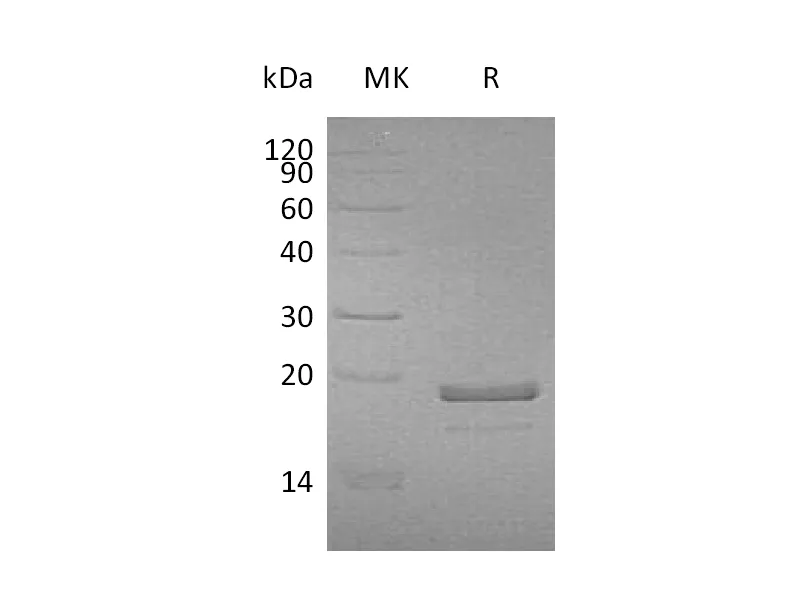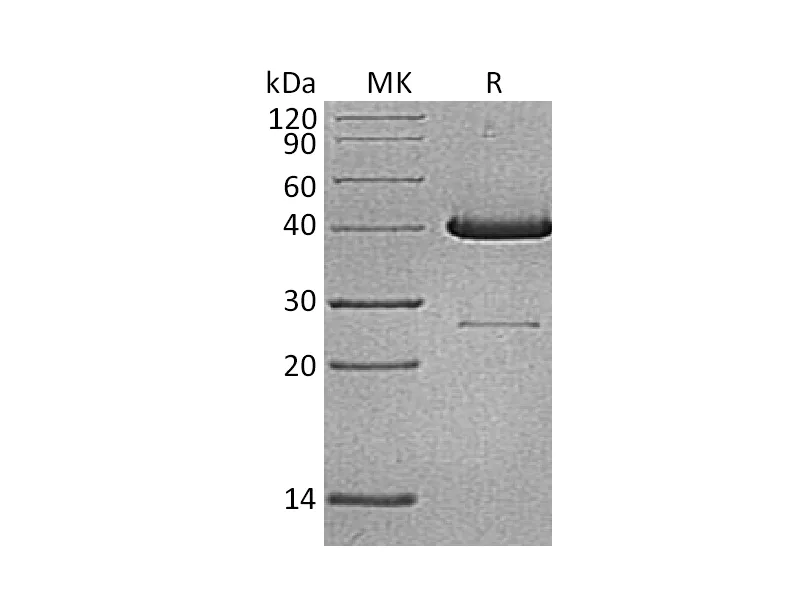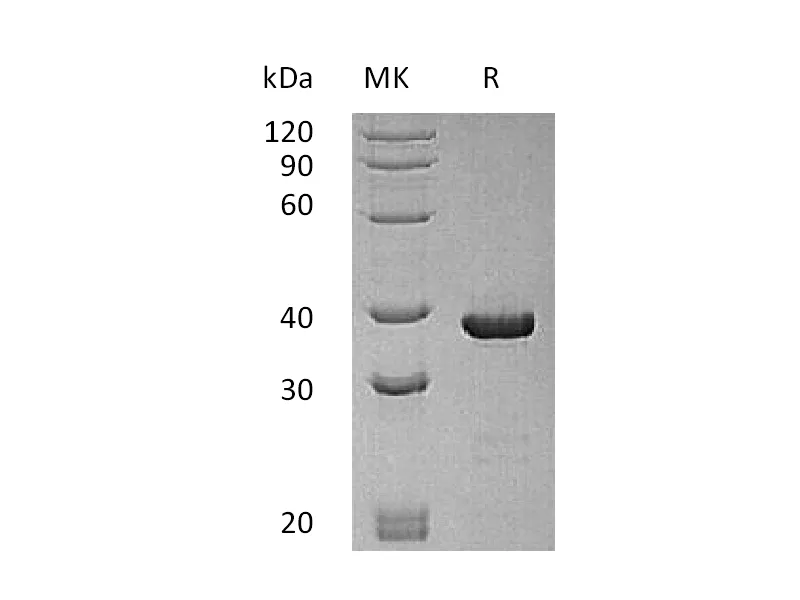| 产品名称 |
Recombinant Human SP-D (C-6His) |
| 英文名称 |
SP-D/Pulmonary surfactant-associated protein D |
| 纯度 |
Greater than 95% as determined by reducing SDS-PAGE |
| 内毒素 |
<1 EU/µg as determined by LAL test. |
| 蛋白构建 |
Recombinant Human Pulmonary Surfactant-Associated Protein D is produced by our Mammalian expression system and the target gene encoding Ala21-Phe375 is expressed with a 6His tag at the C-terminus. |
| Accession |
AAH22318.1 |
| 表达宿主 |
Human Cells |
| 种属 |
Human |
| 预测分子量 |
36.46 KDa |
| 制剂 |
Lyophilized from a 0.2 μm filtered solution of 20mM PB, 150mM NaCl, pH 7.2. |
| 运输方式 |
The product is shipped at ambient temperature.Upon receipt, store it immediately at the temperature listed below. |
| 稳定性&储存 |
Store at ≤-70°C, stable for 6 months after receipt.Store at ≤-70°C, stable for 3 months under sterile conditions after opening. Please minimize freeze-thaw cycles. |
| 复溶 |
Always centrifuge tubes before opening.Do not mix by vortex or pipetting.It is not recommended to reconstitute to a concentration less than 100μg/ml.Dissolve the lyophilized protein in distilled water.Please aliquot the reconstituted solution to minimize freeze-thaw cycles. |
| 分子别名 |
| Pulmonary Surfactant-Associated Protein D; PSP-D; SP-D; Collectin-7; Lung Surfactant Protein D; SFTPD; COLEC7; PSPD; SFTP4 |
| 背景介绍 |
| Surfactant Pulmonary-Associated Protein D (SP-D) is a 43 kDa member of the collectin family of innate immune modulators. Its principal components consist of a collagen-like region and a C-terminal carbohydrate recognition domain (CRD), a structure that places it in a subset of pattern recognition proteins termed defense collagens. SP-D is constitutively secreted by alveolar lining cells and epithelium associated with tubular structures and induced in cardiac smooth muscle and endothelial cells. It binds both secreted and transmembrane proteins that transduce its function. It binds human neutrophil defensins, modulating influenza anti-viral defense. It binds MD-2/LY96, a secreted protein that cooperates with Toll-like receptors (TLRs) in the response of macrophages to bacterial lipopolysaccharides (LPS) or cell wall components. It also binds macrophage CD14 and TLRs directly, blocking binding of LPS and down-regulating TNF-α secretion. SP-D binding of both SIRPα and the calreticulin/CD91 complex on macrophages allows for a graded response to environmental challenge. |
注意事项
本司产品仅用于科研,不用于临床诊断和治疗




